Mainland Affairs Council Deputy Minister Liang Wen-chieh (梁文傑) yesterday said China was using “united front” tactics in its second Cross-Strait Chinese Culture Summit, which started on Wednesday, and its sixth Cross-Strait Media Summit, which began yesterday.
“Our view regarding such activities remain the same,” he told a news conference in Taipei. “They are obviously part of ‘united front’ tactics.”
“In 2019, the management of Taiwanese news media participated in a similar event, where they were lectured during a closed-door meeting by then-Chinese People’s Political Consultative Conference chairman Wang Yang (汪洋) about the importance of amplifying pro-unification agenda,” Liang said, adding that the recorded conversations sparked controversy.
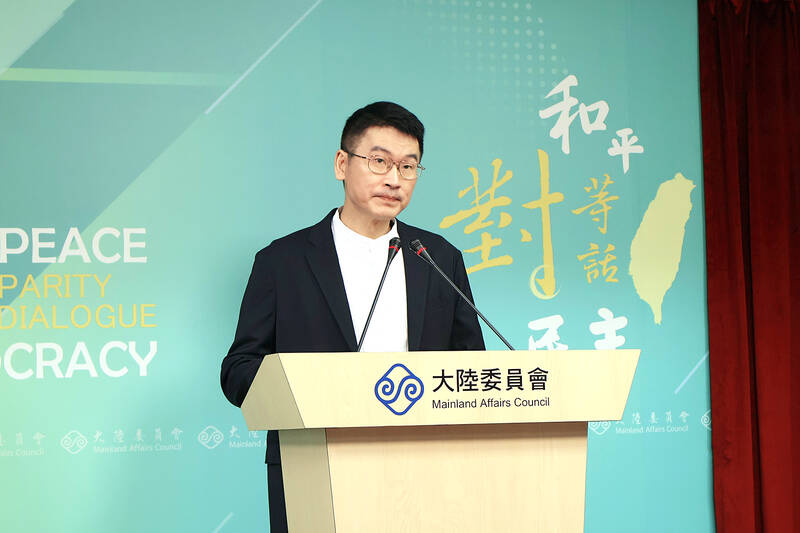
Photo: CNA
“We do not want the same thing to occur this time. People have high expectations for news media, which should be a watchdog in society,” he said.
According to Chinese media reports, Want Want Holdings deputy chairman Chou Hsi-wei (周錫瑋) and Eastern Multimedia Group chairman Gary Wang (王令麟) took part in the the media summit at the Beijing Hotel.
Want Want and Eastern Broadcasting own the Chinese-language newspaper China Times and satellite television network Eastern Broadcasting.
Nearly 150 people attended the media summit, Chinese media said.
China’s Taiwan Affairs Office Deputy Director Wu Xi (吳璽) during the summit said that Chinese and Taiwanese media should use the event as a platform to deepen exchanges.
Media cooperation is crucial to establishing a peaceful foundation for cross-strait relations, Wu said.
They should unite the hearts and minds of people across the Taiwan Strait, and work together to overcome the challenges of technological innovation and structural changes to mass media, she added.
In other news, on Tuesday, a Taiwanese delegation of about 30 people, including former Chinese Nationalist Party (KMT) chairwoman Hung Hsiu-chu (洪秀柱), was received by top Chinese Communist Party officials.
“We must insist on the ‘one China’ principle and the ‘1992 consensus,’ oppose Taiwanese separatism and promote the great mission of national unity with unwavering determination,” Chinese People’s Political Consultative Conference Chairman Wang Huning (王滬寧) said during the meeting.
The so-called “1992 consensus,” a term former Mainland Affairs Council chairman Su Chi (蘇起) admitted to making up, refers to a tacit understanding between the KMT and the Chinese government that both sides of the Strait acknowledge there is “one China,” with each side having its own interpretation of what “China” means.
National Cheng Kung University political science professor Hung Ching-fu (洪敬富) said that the event underscored Chinese media’s role as the government’s mouthpiece, not its watchdog.
Exchange is being used as a pretext for surrender to China, he said, adding that the public should be wary of the outlets that volunteer to become the “local facilitators” of Beijing-directed meddling.
Additional reporting by CNA
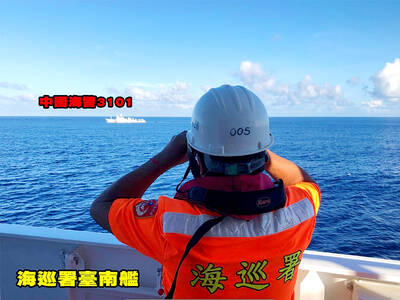
The Coast Guard Administration (CGA) yesterday said it had deployed patrol vessels to expel a China Coast Guard ship and a Chinese fishing boat near Pratas Island (Dongsha Island, 東沙群島) in the South China Sea. The China Coast Guard vessel was 28 nautical miles (52km) northeast of Pratas at 6:15am on Thursday, approaching the island’s restricted waters, which extend 24 nautical miles from its shoreline, the CGA’s Dongsha-Nansha Branch said in a statement. The Tainan, a 2,000-tonne cutter, was deployed by the CGA to shadow the Chinese ship, which left the area at 2:39pm on Friday, the statement said. At 6:31pm on Friday,
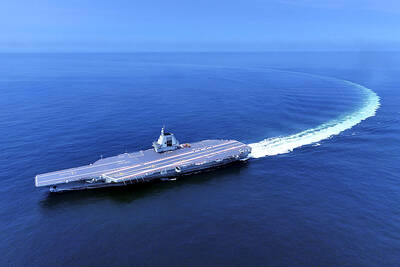
The Chinese People’s Liberation Army Navy’s (PLAN) third aircraft carrier, the Fujian, would pose a steep challenge to Taiwan’s ability to defend itself against a full-scale invasion, a defense expert said yesterday. Institute of National Defense and Security Research analyst Chieh Chung (揭仲) made the comment hours after the PLAN confirmed the carrier recently passed through the Taiwan Strait to conduct “scientific research tests and training missions” in the South China Sea. China has two carriers in operation — the Liaoning and the Shandong — with the Fujian undergoing sea trials. Although the PLAN needs time to train the Fujian’s air wing and
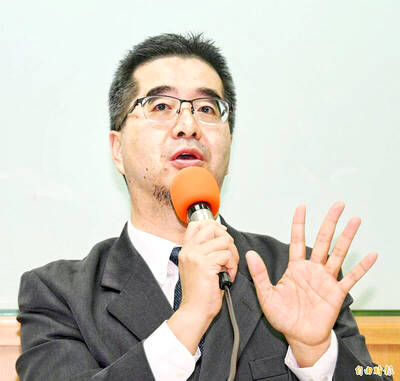
The American Institute in Taiwan (AIT) put Taiwan in danger, Ma Ying-jeou Foundation director Hsiao Hsu-tsen (蕭旭岑) said yesterday, hours after the de facto US embassy said that Beijing had misinterpreted World War II-era documents to isolate Taiwan. The AIT’s comments harmed the Republic of China’s (ROC) national interests and contradicted a part of the “six assurances” stipulating that the US would not change its official position on Taiwan’s sovereignty, Hsiao said. The “six assurances,” which were given by then-US president Ronald Reagan to Taiwan in 1982, say that Washington would not set a date for ending arm sales to Taiwan, consult
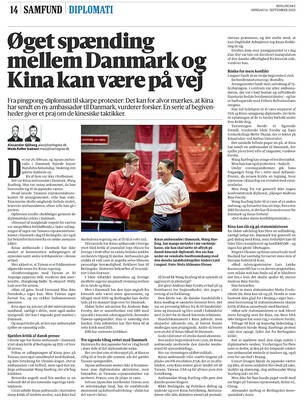
A Taiwanese academic yesterday said that Chinese Ambassador to Denmark Wang Xuefeng (王雪峰) disrespected Denmark and Japan when he earlier this year allegedly asked Japan’s embassy to make Taiwan’s representatives leave an event in Copenhagen. The Danish-language Berlingske on Sunday reported the incident in an article with the headline “The emperor’s birthday ended in drama in Copenhagen: More conflict may be on the way between Denmark and China.” It said that on Feb. 26, the Japanese embassy in Denmark held an event for Japanese Emperor Naruhito’s birthday, with about 200 guests in attendance, including representatives from Taiwan. After addressing the Japanese hosts, Wang